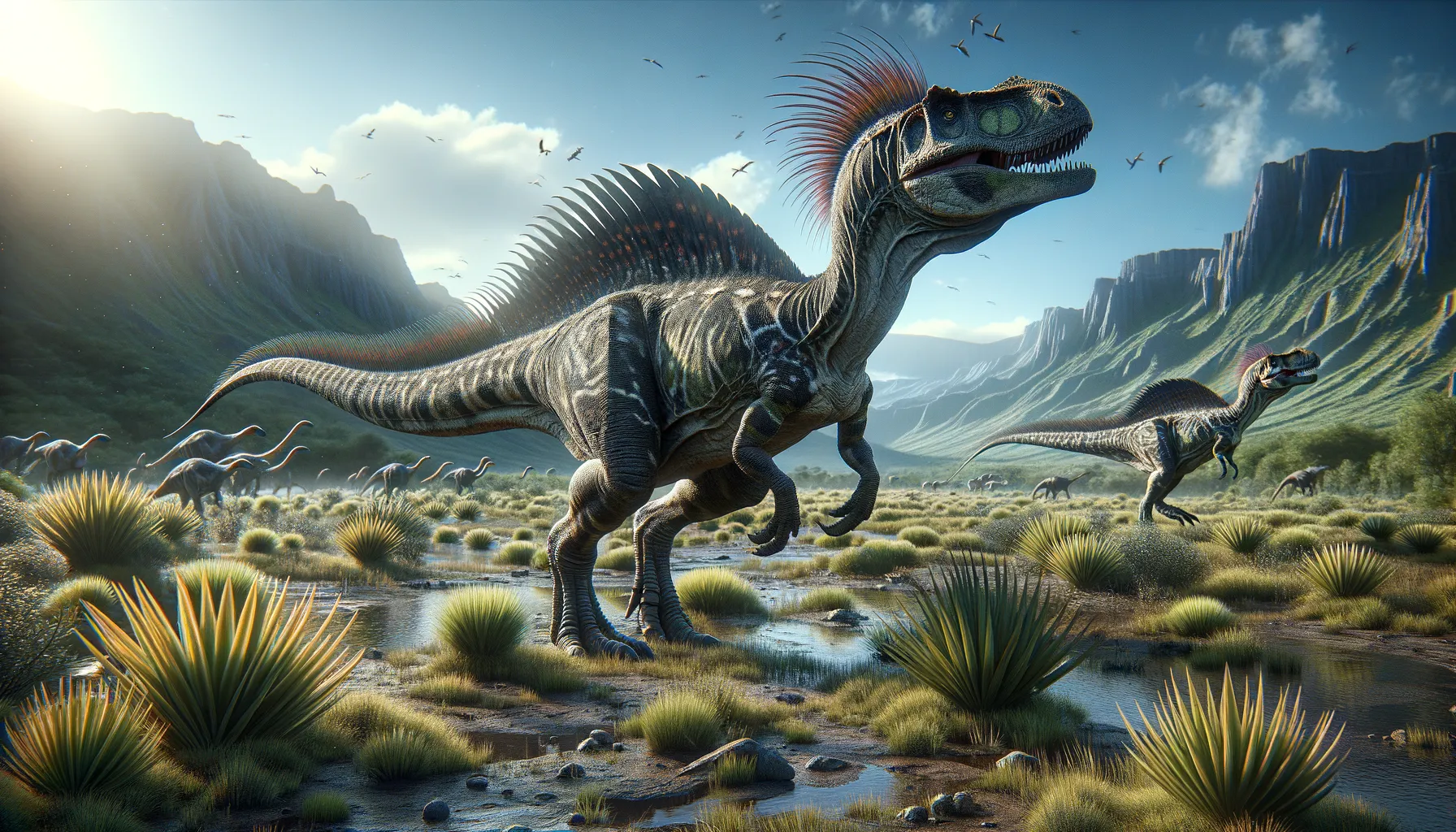
Procheneosaurus
Crested giants of the Cretaceous plains.
Period
Cretaceous
Length
Around 9 meters (30 feet) long.
Height
Approximately 2 meters (6.5 feet) tall.
Weight
Roughly 1,500 kilograms (3,300 pounds).
Procheneosaurus was a medium-sized herbivorous dinosaur that lived during the Late Cretaceous period. Known for its distinctive head crest, it likely used this feature for communication within its species. These dinosaurs roamed the prehistoric floodplains of North America, foraging for plants. Fossil records suggest they lived in herds, moving together for protection against predators.
Diet
As herbivores, they primarily fed on conifer leaves, seeds, and fruits. Their well-adapted teeth helped them grind tough plant material efficiently.
Hunting
Being herbivores, they did not hunt. They relied on keen senses to detect predators and relied on speed and herd behavior for protection.
Environmental challenges
Procheneosaurus faced challenges such as fluctuating climates that affected plant availability. Seasonal changes would have required migratory behavior to find food and water. Predation by large carnivores like tyrannosaurs was a constant threat, driving them to stay vigilant and move in groups.
Speed
Moderate; adapted for quick sprints rather than long chases.
Lifespan
Estimated between 15 to 20 years.
First discovery
Found in the early 20th century in Alberta, Canada.
Fun Facts
- Procheneosaurus was a plant-eating dinosaur that lived during the Late Cretaceous period, about 75 million years ago.
- This dinosaur is known for its duck-billed appearance, being part of the hadrosaur family.
- Procheneosaurus had a distinctive bony crest on top of its head, which may have been used for communication or display.
- While Procheneosaurus fossils have been found in North America, it remains an enigmatic dinosaur due to the scarcity of complete skeletons.
- The name Procheneosaurus means 'before Cheneosaurus,' reflecting an early belief about its evolutionary relation to duck-billed dinosaurs.
- As a herbivore, Procheneosaurus would have likely grazed on a variety of plants, possibly including conifers and flowering plants.
- Scientists speculate that Procheneosaurus, like many hadrosaurs, may have lived in groups to protect against predators.
Growth and Development
Young Procheneosaurus hatched from eggs and grew rapidly to avoid predation. Juveniles likely stayed with the herd for protection under the watchful eye of adults. As they matured, their distinctive head crests grew more prominent, playing a role in social interactions.
Habitat
They lived in lush floodplains and forests, which provided ample food. The area was rich in rivers and lagoons, offering abundant water resources. These environments supported diverse ecosystems, creating a variety of food sources and predators.
Interaction with other species
Procheneosaurus coexisted with various herbivorous and carnivorous dinosaurs. Their presence in herds could deter smaller predators and create alliances with other herbivores. Communication likely involved both vocal and crest displays to indicate presence and establish social hierarchy.
Natural lifespan
Their natural lifespan was typically around 15 to 20 years.
Reproduction
Procheneosaurus reproduced by laying eggs in carefully selected nesting grounds. Parental care was likely minimal after hatching, as young ones operated on their instincts to survive. Social behaviors may have included communal nesting sites for better protection.
Social behaviour
These dinosaurs were social creatures that moved in herds. Herd behavior provided better protection against predators and social bonds within groups were likely important for survival. Crest displays could have been significant for intra-species communication and establishing dominance or mating rights.
Fossil locations
Fossils have been discovered primarily in North America, particularly in regions known for Cretaceous deposits, like Alberta and Montana. These locations contain rich sedimentary layers ideal for preserving dinosaur bones and other ancient life forms. Continued excavations in these areas are providing deeper insights into their lives and environments.
